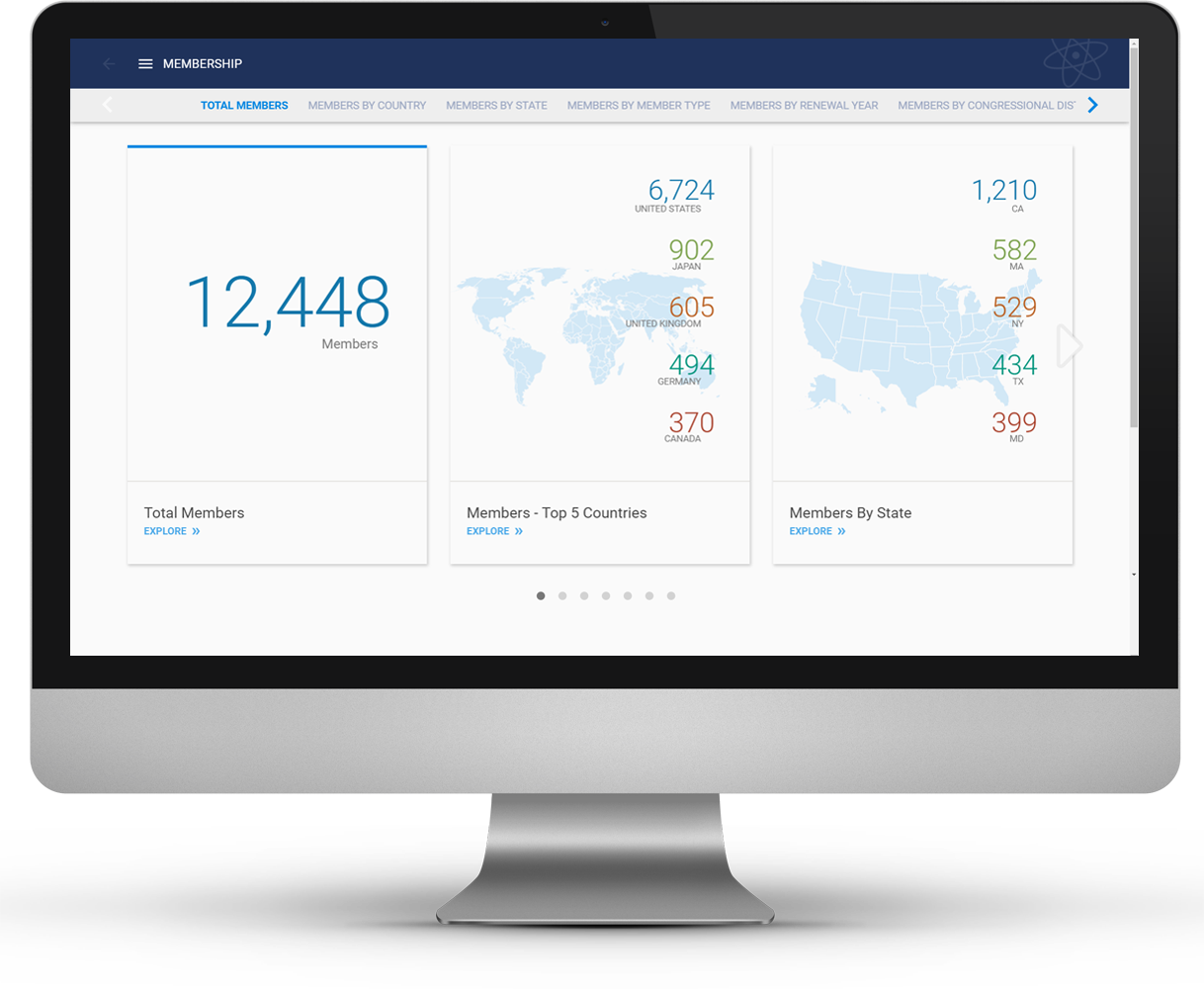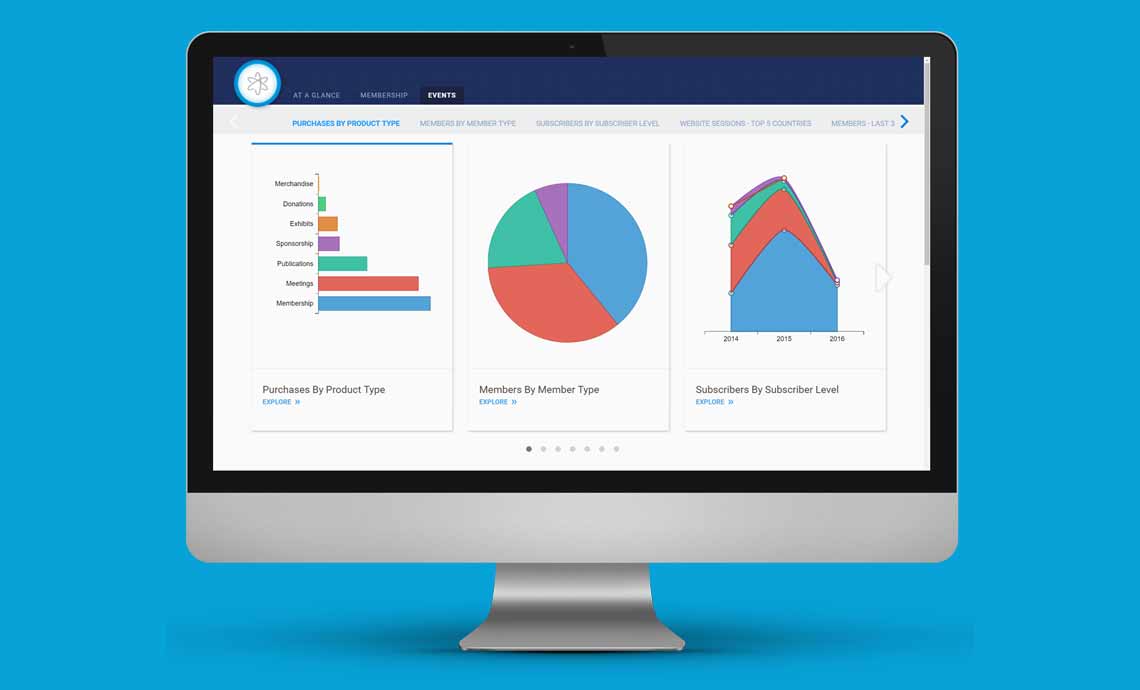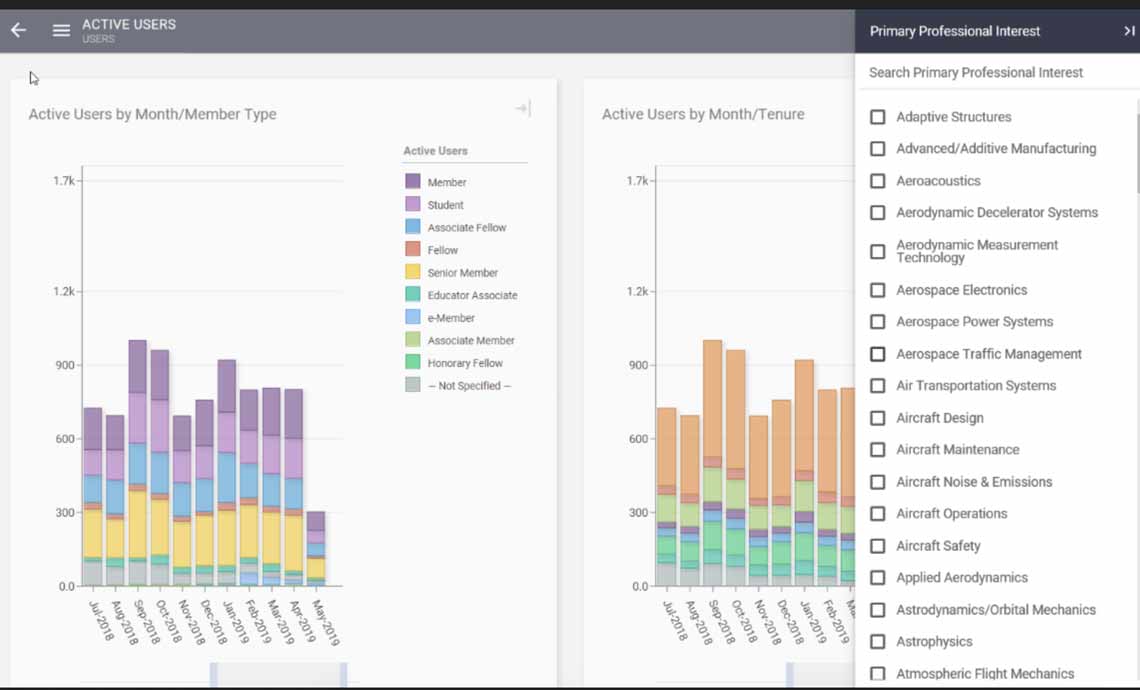How are the most forward-thinking organizations using data analytics? They are bringing data sources together to create a solid base on which all business operations can be built. They’re using data analytics to make informed decisions that drive true organizational growth and change.
But on a practical level – what does this really mean? Data benefits associations and nonprofits in a host of different scenarios and use cases. Learn how others are gaining momentum and getting creative with their data. Are you seeking inspiration for how to use data in your organization? Look no further:
Engagement scoring and total value of membership
Professional organizations have begun creating engagement scoring systems on an individual level so that they can better understand their members. Each one is assigned a numeric value based on his or her activity and contributions, which makes it easy to identify, segment, and reach unengaged individuals with targeted campaigns. It also gives organizations insight into their most engaged members.
Trade organizations are beginning to calculate the total value of membership, and here’s why: they can demonstrate the value their members are getting, which creates an easy justification for membership renewal. By assigning value to the individual member engagement (conference attendance, website engagement, community contributions, etc.), associations can assign a dollar value for corporate member engagement. And if they use the right tools, the organization can automate the process to avoid manually exporting data and compiling reports.
Personalization
Professional organizations love this, and here’s why: you can create personalized user experiences across virtually any digital platform: mobile app, CMS, online app, etc. With all the data from essential technologies in one place, associations can personalize a user experience based on specified conditions.
Using demographic, historical, membership, or other data, organizations are crafting compelling digital experiences on websites, community platforms, blogs, and more, giving personalized recommendations about things like member benefits, related content, upcoming conference promotions, or reminders about membership renewal.
Segmentation and list targeting
Organizations are using data to scale successes with their most engaged audiences. For example, if you are attempting to increase registrants for your annual conference, you can calculate which demographic is most likely to attend. Then you can apply filters to the list, suppress ones that have already registered, and develop campaigns and messaging specific to your identified audience. The same logic can be applied to membership renewals or donors.
Setting and tracking goals
Associations and nonprofits are using data analytics platforms to track their most important organizational goals. Some platforms enable setting and tracking goals to help achieve business growth and ensure they’re hitting essential markers along the way. Organizations can automatically measure performance against goals and receive an indicator of progress, which is easily accessible to everyone at any time.
The most successful organizations have all their data living in one place because it’s easier to track against one set of comprehensive data.
Optimizing event content
Organizations have begun combining digital and non-digital data sources to get a true 360-degree insight into engagement. Having this data available and easily accessible is empowering associations to increase engagement by making sure content is relevant to members and visitors.
The data is sourced from multiple places – email, community, social, website, etc. – to identify which topics will resonate with their member audiences. Using blended data from these different systems, associations are crafting relevant content and events that are more engaging than they’ve ever been.
Value to exhibitors
For organizations that have event sponsors, proving exhibitor value is crucial. Some calculate value by pulling data from the event registration platform and AMS to show what percentage of their membership attends the event and how many registered vs. attended.
Others take it a step further by incorporating beacon data, which gives information about where individual attendees went and which sessions they joined throughout an event. The organization then proves value by segmenting activity by an attendee’s job title, generation, or certifications. When an exhibitor is considering sponsorship, the association can show exactly how many people in the target profile attended the previous year, what average percentage stopped by the exhibit hall, and how much time they spent at which booths.
Text analysis
Surveys, community posts, social media, and other types of unstructured data have historically required time-consuming manual analysis. Through the power of automated text analysis, organizations are now able to quickly know which topics are mentioned most often, how members feel about different topics, and what content resonates with their audience. Organizations can quickly determine general sentiment towards a topic and respond in an appropriate and timely manner.
Predictive
Though associations and nonprofits are in the early stages of using predictive analytics, it’s worth mentioning. This method of analytics is advanced today, but it will be a standard practice in the not-so-distant future. Traditionally, organizations have looked at historical data to understand the present, whereas predictive analytics uses data from the past to forecast future events. For example, some associations use predictive analytics to estimate the total count of conference registration or to forecast the likelihood of membership renewal.
Organizations are coming up with new creative ways of how to use it all the time; the sky is the limit. Nucleus was created for this reason, to give associations a flexible tool that will help them make data informed decisions that impact their day-to-day organizational success. Data analytics is constantly evolving; subscribe to the blog to stay fresh on ways to use data in your organization.
Would you like to learn more? Select any of the boxes below and we will be in touch with more information about how you can creatively use data analytics in your organization:


